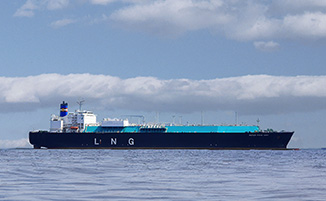Claudie Eustache
As part of discussions surrounding the construction of a natural gas liquefaction facility in the city of Saguenay, Énergie Saguenay has mandated the Université du Québec à Chicoutimi’s (UQAC) Chaire en éco-conseil ( Eco-counsel Research Chair) to assess the possibility of a path toward carbon neutral installations. The Chair recently published its report, in which it tried to answer the question : « How can a new high-emission Canadian business find credible methods to become carbon neutral in the current global context. Which solutions can be implemented and prioritised?».
In an industrial context, carbon neutrality means that the business’ emissions are, fromin an accounting perspective, balanced by captation or reduction projects carried by the company or a third party. In GNL’s case, emissions to be compensated would be an approximate volume of 421 000 tons/year. This objective can be reached by various measures, including choosing production methods avoiding emissions, reusing GHG byproducts for other industrial purposes (circular economy), as well as compensation, either by developing captation projects or purchasing offsets. The Chair mentions that the Quebec context also brings important carbon accounting issues for GNL, more specifically relating to SPEDE’s rules and limitations (Québec’s cap and trade system which the project will have to be part of).
Following a literature review and various discussion with GNL Québec, four main avenues have been assessed:
1. Afforestation, which isn’t an interesting option in the short term considering the time line necessary to reach the plantation’s full carbon capture potential.
2. The captation, purification and industrial use of directly produced CO2; this is a very interesting option from an industrial ecology perspective, but requires finding partners and coordinating with them intensively in the early stages of the project.
3. Purchasing renewable natural gas (RNG) sourced from forestry by-products would present great potential to compensate the factory’s emissions, however, this would be a medium-term solution due to technical and logistical constraints.
4.Purchasing offsets from the carbon markets. This would be necessary for Énergie Saguenay to reach its carbon neutrality goals. These offsets could be purchased on the local compliance market (SPEDE) or on the voluntary market.
The report affirms the necessity of buying offsets in the project’s first years to reach carbon neutrality and the positive role that various types of offsets can play towards the project’s social acceptability goals. We are particularly happy at WILL to see our Sustainable Community initiative being mentioned in this report as a voluntary option that is not only scientifically sound, but that is also a way to maximize local GHG reductions with positive social benefits.

